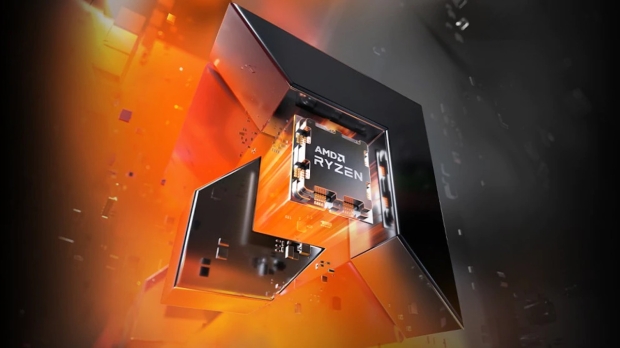AMD's new Ryzen 9 processors with 3D V-Cache tech are now officially launched, but there's been something of a question mark that has remained hanging over the lesser of the two models.
The Ryzen 9 7900X3D has yet to appear in reviews (at least not from any mainstream sites), and there's been some uncertainty about how the cores are split between the two chiplets onboard the CPU.
Well, now we know courtesy of Andreas Schilling, who is the editor at German tech site Hardwareluxx.de. Schilling claims to have official confirmation (apply a pinch of salt now) from AMD that the cores are split evenly between the two chiplets. (See the tweet above for the full details, including diagrams of core and cache distribution).
The 7900X3D is a 12-core processor, so what this means is that there are two chiplets (CCDs) with 6-cores apiece, and not as some others have previously theorized, one with 8-cores and one with 4-cores.
Why is that important? Well, the two CCDs on the 7900X3D are different in that one has 3D V-Cache on top, and the other doesn't, which in the latter case, allows AMD to run with a faster boost speed for that chiplet. The same configuration is true of the 7950X3D, except as there are 16-cores in that flagship processor, there's no argument about how they might be split (8+8 is the only way).
Finding out the 7900X3D is 6+6 is not exactly a surprise, either, but it's always good to have confirmation. Balancing the core split in this manner and keeping things equal makes sense in terms of when the AMD driver is making decisions about which CCD to use, and perhaps shutting off the other chiplet (assuming its extra threads aren't needed - if they are, then obviously it comes into play).
Gaming workloads should mostly benefit from running on the chiplet with the 3D V-Cache, but that isn't necessarily the case - a few games may find better performance with the higher boost clock (and certainly there'll be apps that benefit more in the latter scenario).
There's been some disappointment aired online from gamers who wanted an 8-core split for the cache-carrying chiplet, as you might imagine, but doubtless AMD will have carefully considered the configuration of its 7900X3D.
And what's likely to have figured into that mulling process, of course, is that running with 6-core chiplets means more room to use silicon that has fallen short of quality assurance (8-core CCDs with one or two faulty cores), rather than having to use a 'perfect' (8-core) chiplet in every 7900X3D.
It'll be interesting to see how the Ryzen 9 7900X3D sells in comparison to the flagship X3D Zen 4 processor, then, with the former's retail price pitched at US$599 - so you don't have to pay a whole lot more for the full complement of 8-cores to go with your 3D V-Cache on the 7950X, as that's priced at US$699.
Although the other argument is that gamers could well be best served by waiting for the 7800X3D, the catch being that this CPU doesn't turn up for a couple of months yet (it's debuting in April).



